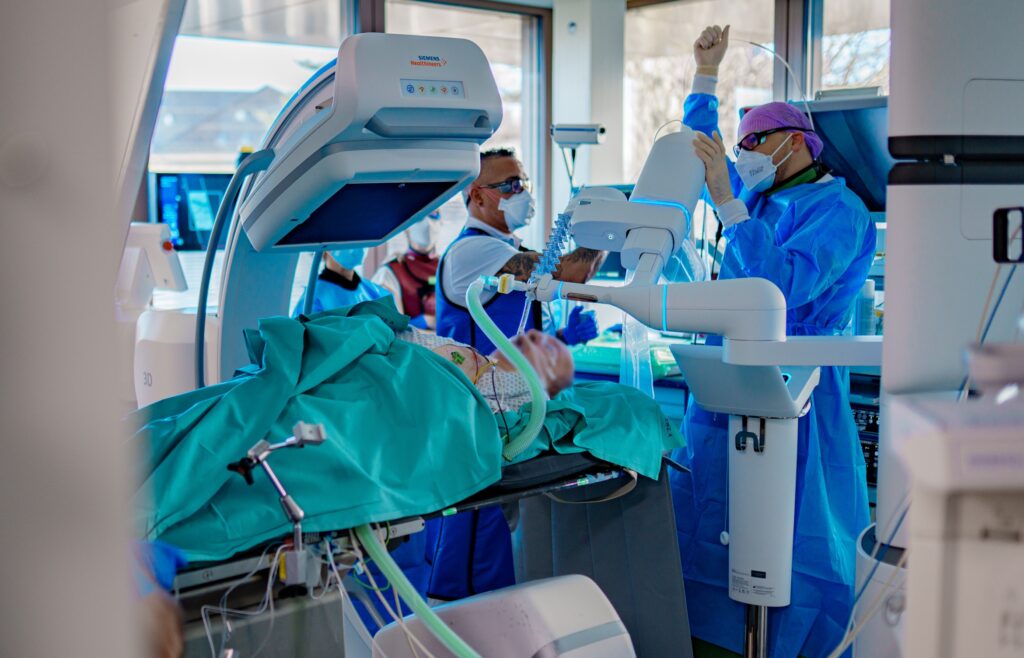A cutting-edge bronchoscopy technique, guided by a robotic arm and a specialized cone-beam CT (CBCT) scanner, outperforms traditional diagnostic methods when it comes to small, hard-to-reach tumors found in the periphery of the lungs. These findings from an ongoing clinical trial at University Hospital Zürich were presented on Sunday at the European Respiratory Society (ERS) Congress.
“Robotic-assisted bronchoscopy with CBCT achieved a diagnostic yield more than three times higher than conventional bronchoscopy,” said Carolin Steinack, MD, senior physician and head of the Interventional Lung Center at University Hospital Zürich. “In clinical practice, this technology enables accurate diagnosis in patients for whom conventional bronchoscopy offers no viable option.”
Diagnosing lung cancer in the earliest stages can have a significant impact on treatment and survival outcomes. At this point in the progression of the disease, patients have the highest chances of being cured and treatment costs are overall much lower than when tumors are diagnosed at later stages. However, early-stage tumors are typically small and located in parts of the lung that are difficult to reach using traditional bronchoscopy methods, rendering them unable to take a biopsy sample for diagnosis.
The robot-guided bronchoscopy system has been designed to overcome this major limitation. “The technology allows specialists to access nearly any region of the lung, meaning that we can offer biopsy to more patients and diagnose cancers earlier when treatment is more likely to be effective,” said Steinack.
As part of the trial, 78 patients with abnormal growths at the outer edges of the lungs were divided into two groups. One group was tested using traditional bronchoscopy guided by X-ray imaging, while the other was tested using the robot-guided bronchoscope and a CBCT scanner to find tumors in real time during the procedure. A total of 127 tumors were tested, measuring 11 millimeters wide on average.
While the traditional technique was able to retrieve a biopsy in 23% of growths, the robot-assisted technology successfully took a biopsy sample in over 84% of tumors. Patients for whom the traditional approach failed were then tested with the robot-guided bronchoscope, which was successful in 93% of these cases. In total, 68 patients were diagnosed with lung cancer during the trial, and 50 of them received a diagnosis of stage 1A lung cancer, the earliest possible form of the disease.
Although the use of this advanced bronchoscopy technology is steadily growing, Steinack estimates that only about 20 of these robotic systems are currently in use across Europe. A major motivation for the clinical trial was to establish whether the benefits of this technology outweigh its costs, which include an initial investment of approximately one million euro for the equipment and an additional €2,000 to the cost of each single procedure compared to traditional approaches.
“This technology is very advanced but also very expensive, so it’s important to test whether it performs better than traditional bronchoscopy,” said Thomas Gaisl, MD, PhD, attending physician in the department of pulmonology at University Hospital Zürich. “In centers that see lots of patients with these tumors, I believe the benefits of this technology justify the investment. However, the robotic system should be reserved for small, hard-to-reach lesions, where conventional bronchoscopy is not an option.”

